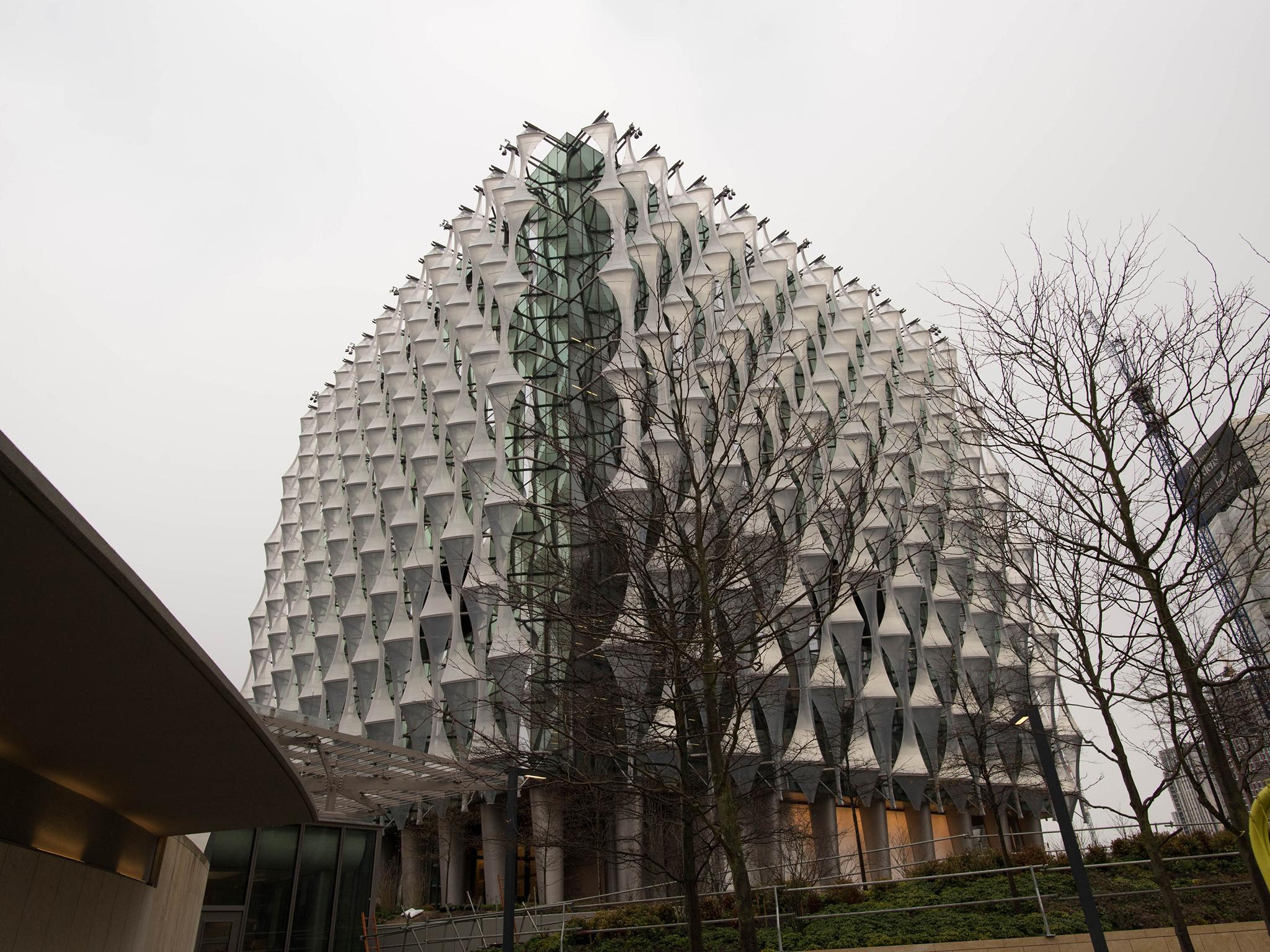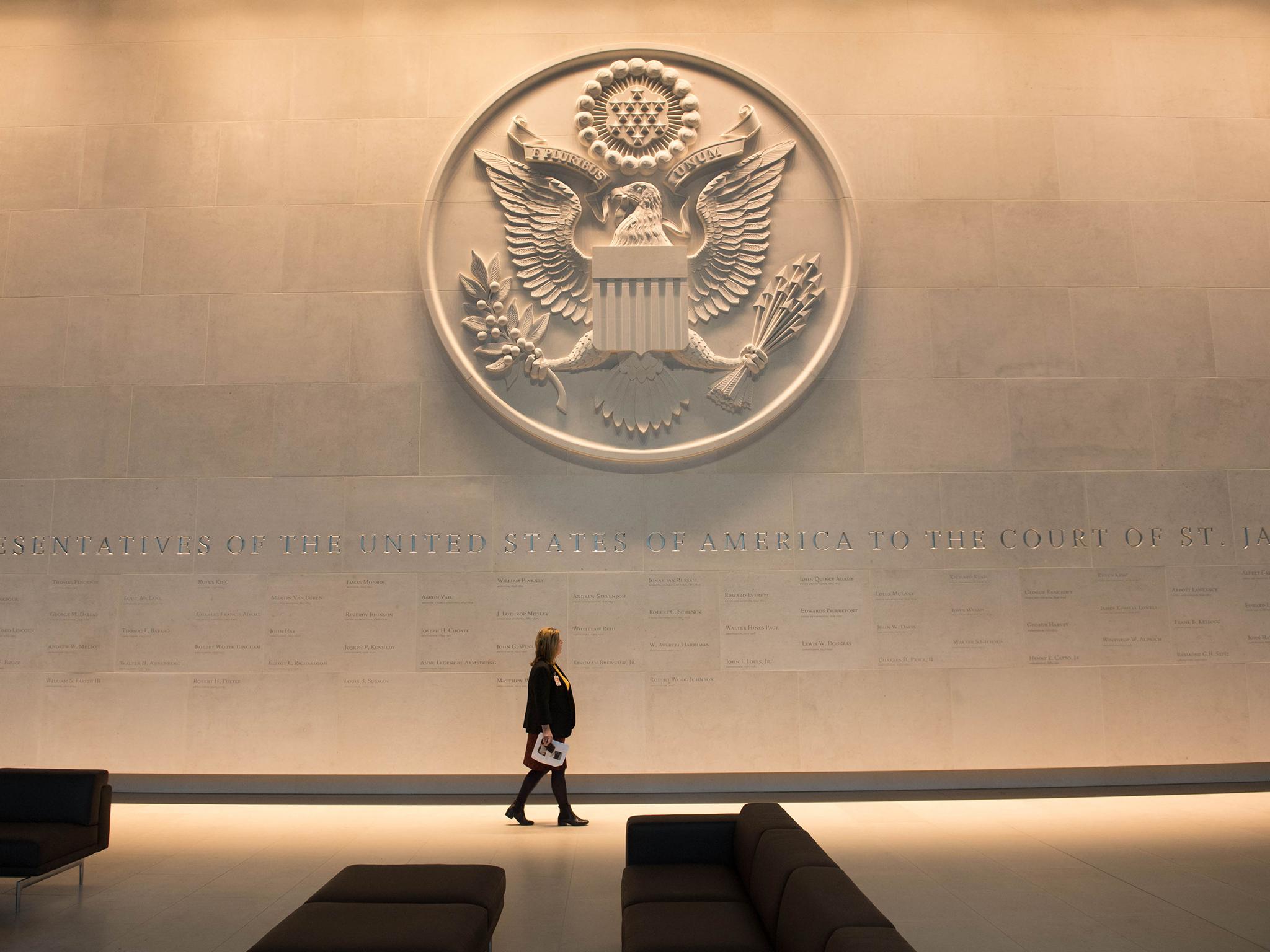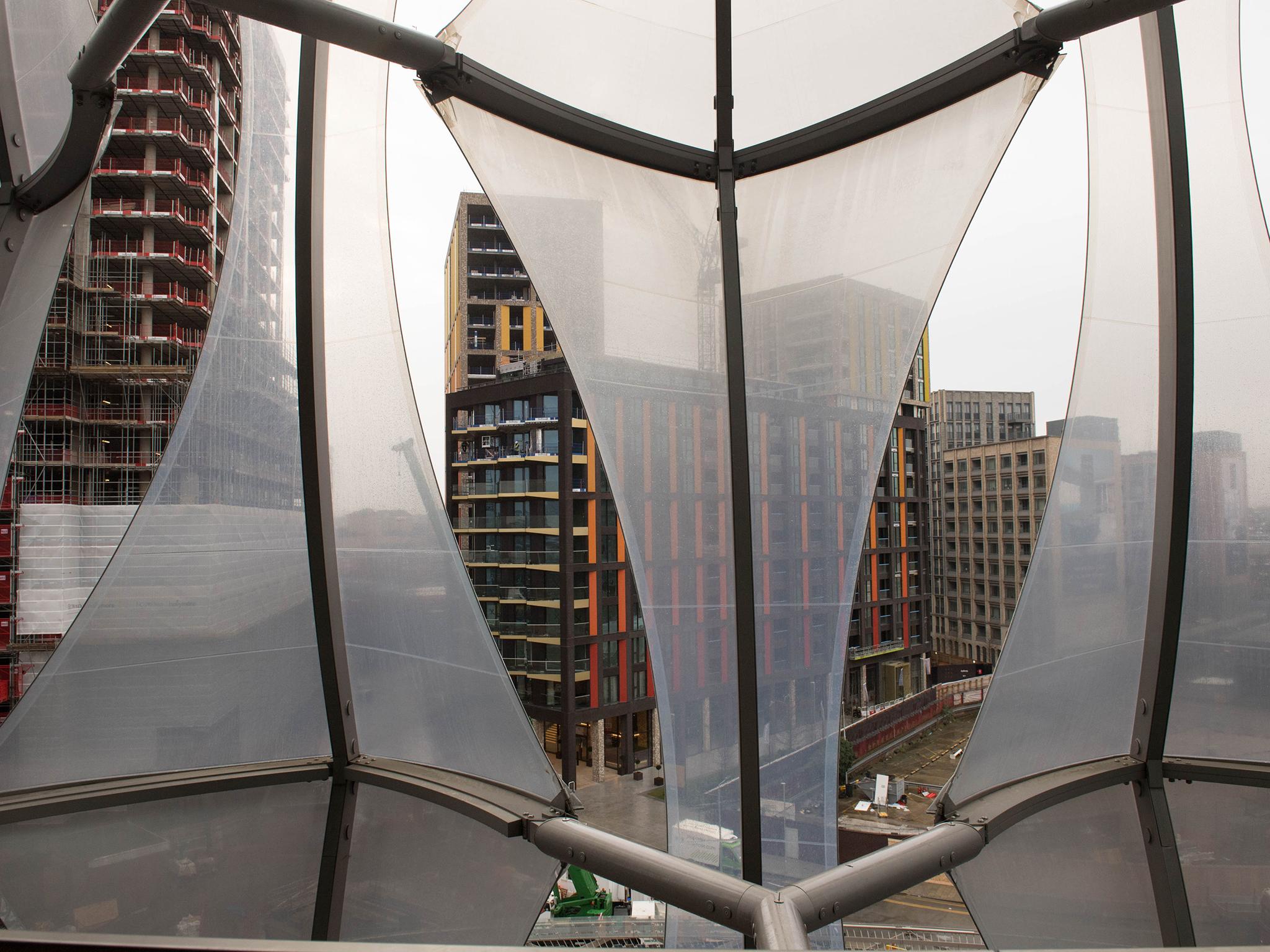New US embassy in London: Thameside Glass cube replaces 1950s concrete complex in Mayfair square
Ken Livingstone said he expected 'something more exciting'

Your support helps us to tell the story
From reproductive rights to climate change to Big Tech, The Independent is on the ground when the story is developing. Whether it's investigating the financials of Elon Musk's pro-Trump PAC or producing our latest documentary, 'The A Word', which shines a light on the American women fighting for reproductive rights, we know how important it is to parse out the facts from the messaging.
At such a critical moment in US history, we need reporters on the ground. Your donation allows us to keep sending journalists to speak to both sides of the story.
The Independent is trusted by Americans across the entire political spectrum. And unlike many other quality news outlets, we choose not to lock Americans out of our reporting and analysis with paywalls. We believe quality journalism should be available to everyone, paid for by those who can afford it.
Your support makes all the difference.At $1bn it is the most expensive embassy ever constructed. But its designers say the new American chancery on the south of the River Thames marks a paradigm shift in design: the US Embassy here will exude openness, while hiding all the clever ways it defends itself from attack.
After decades of building American embassies that look brutalist or bland, like obvious fortresses, the soon-to-be opened chancery in London’s Nine Elms is a crystalline cube, plopped down in the middle of a public park, without visible walls.
The building does not shout, “spies work here!” or “stand back!” even though this city has been subjected to a string of terror attacks. Instead the vibe is a modernist museum that also happens to issue visas and might have a few hidden bunkers somewhere.
Instead of blast walls there is a perimeter pond, with recycled water waterfalls, native hammocks and deep trenches – and on the roof arrays of solar panels that will produce enough juice to run the building and give the extra watts back to the grid.
The building sports frosted glass walkways, inspirational quotes from the US constitution, neon sculpture, reclaimed teak benches, Cornwall granite, its own subterranean wastewater treatment plant and a dozen gardens in the sky, one representing the flora of the American Midwest.
There’s also a pub, a gym, a post office and a posh Marine barracks, with millionaire views all the way to Westminster for the hard-working 19-year-old lance corporals. One assumes there is a CIA station, but that was not on the tour.
The press were given a first look inside last Wednesday – the embassy will open its doors on 16 January 2018 – and the early word from the media has been mostly positive.

The Evening Standard called the interiors “stunning” and the Daily Mail said that rather than a slick and hard-edged high rise, the embassy exterior had a “soft and pillowy” feel – because of the plastic polymer veils that drape three sides of the building, enhancing its energy efficiency.
This is a far cry from earlier critiques.
Ken Livingstone, the former mayor of London, said that the city expected “something a little bit more exciting.”
A critic at The Guardian called the pond “a moat” and reported that the two British jurors on the design jury tried to block the design because it was too boring.
They may be proven wrong. The reviews are not yet in. But the embassy is – if you can say this about an American embassy in 2017 – kind of cool.
The new US ambassador, Robert “Woody” Johnson, a personal friend of the President and owner of the New York Jets football team, demurred when asked if Donald Trump was planning to come early next year on a “working visit” to London and dedicate the opening.
“We look forward to welcoming him,” Johnson said, whenever Trump comes. “No date is set,” he said. “He’s a busy president.” There is much speculation about a visit in February.
Politicians including London Mayor Sadiq Khan have pressed Theresa May to rescind her invitation to Trump. Activists have promised mass demonstrations if and when the American President shows up. Labour MP Paul Flynn even said that Trump should be arrested on arrival.
In his remarks, the US ambassador stuck to the positive. He said, “Little America is moving south of the river,” a new beginning in a formerly rough neighbourhood of council estates and old warehouses, now exploding with growth, between the Chelsea and Vauxhall bridges.
Johnson confessed he was a little wistful, too, because there is so much history at the old embassy and its location in Grosvenor Square.
The first US ambassador here was John Adams, who went on to be the US's second president.
The old embassy, a 1960 modernist gem by the architect Eero Saainen, was sold to the real estate division of Qatar’s sovereign wealth fund, which has gobbled up high-profile London properties including the Harrods department store. They are going to turn it into a luxury hotel. The money from its sale, and of other US properties in London, funded entirely the billion-dollar embassy.
The building was designed by the Philadelphia firm KieranTimberlake. Co-founder James Timberlake said that the job specs for the building were 1,000 pages long.

His vision, complex and simple, was to create an embassy at once “welcoming and secure,” measuring a desire to express “transparency, openness, equality” against the need to “filter all and everything and everyone who enter.”
Timberlake envisioned a “crystalline cube,” because a cube is “efficient and provocative.” He wanted “a radiant beacon,” iconic architecture with interiors “light-filled, airy, with great views,” that was also environmentally outstanding – the 518,000 square foot, 12-story building will produce more energy that it uses, even after it cares for 800 staff and 1,000 daily visitors.
Londoners love to give nicknames to the city’s cutting-edge architecture – such as the Gherkin, Can of Ham, Cheese Grater and the Pringle (or what armchair critic and architectural traditionalist Prince Charles has dismissed as “absurdist picnic table”).
After the design was announced years ago, Martin Linton, the then-MP for Battersea borough , said that it “looks a bit too much like a sugar cube.”
© Washington Post
Join our commenting forum
Join thought-provoking conversations, follow other Independent readers and see their replies
Comments